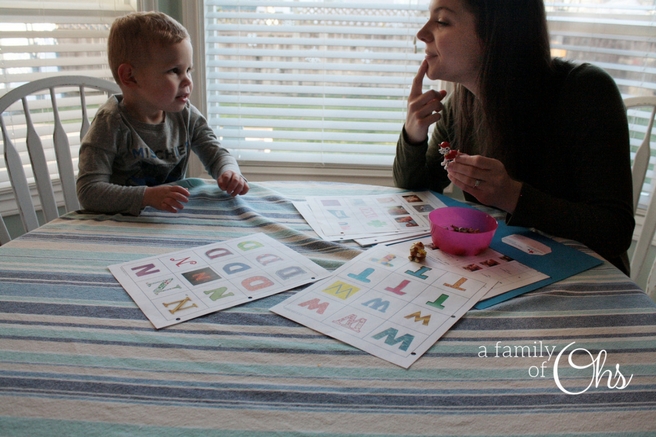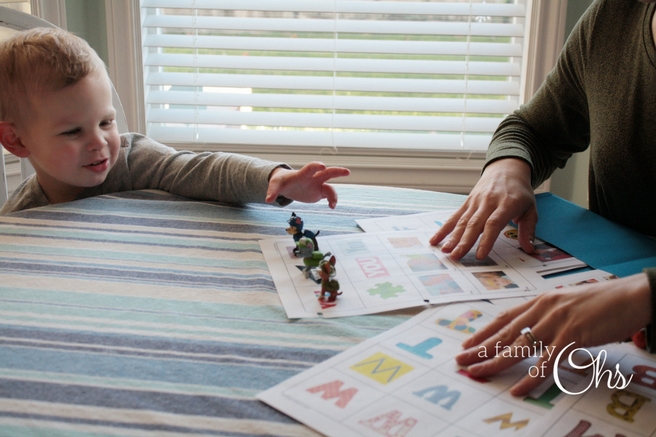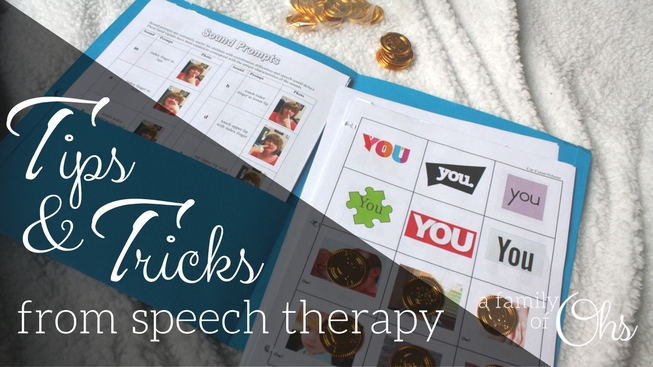“The greatest decision I made”
Enrolling our son Jackson in our local speech therapy program was the greatest decision I made in getting him to speak. Over the first couple months of enrollment we had multiple one-on-one sessions with Jackson’s speech and language pathologist (SLP) in our home. In those sessions she was able to evaluate Jackson’s speech (or lack there of) and give me (the mom) the right tools to teach Jackson to speak myself. We then went on to do speech therapy in a classroom setting for a couple more months.
In this post I want to share with you some practical (and easy) tips and tricks we learnt from our SLP that helped Jackson to speak. Maybe they can help your family too! Remember, I am just a mom, I have no proper training, so always speak to your doctor, community nurse, or local development centre if you think your child needs to be in speech therapy. Different communities may offer different styled programs than the one I have mentioned.
Sharing what we’ve learned
I struggled when we first started the speech therapy, I hadn’t realized I had developed so many bad habits that weren’t helping Jackson to advance in his language. I had to rethink my way of parenting, and break so many bad habits. Jackson has such an advanced level of understanding, I had to take so many steps back. It was like I was talking to him as if he was baby again, although he was over two years old when we started in the program.
I used short sentences, accentuating my words slowly. I slowly made it a habit, focusing on letting him see how my mouth moved and made sounds by getting down to his level.
The most important thing our SLP taught me was:
Teach, don’t test.
This is something I didn’t even realize I was doing. I was constantly asking Jackson questions all day long,
- “What is that?”
- “What does a dog say?”
- “What colour is that?”
I knew Jackson didn’t know how to say the answers, so what was I trying to accomplish by quizzing him? It would just stress him out, and we weren’t making progress. So I started telling him,
- “This is a car. Car. Car. C-c-car”
- “A dog says ‘Woof woof’ – Can you say ‘Woof?'”
- “Your shirt is blue, bbbllllluuuueeee, blue”

The “Every Day” strategies
These are some practical tips that you can teach yourself to do, and incorporate into every day life. The following tips are not so much teaching speech, but encouraging language in children:
- Vocalize activities the child is doing, emphasizing on one word,
- e.g. “You are running, run, run, run. Look at you run!”.
- Imitate what your child is doing, and the sounds they make. Even if it isn’t a real word. Show them it’s fun to copy them, so they will learn it’s fun to copy you,
- e.g. Child spinning around saying: “babababada”. Mom spinning around saying: “babababada”.
- Attempt to Interpret what your child is saying,
- e.g. Child says looking at a dog: “wuh, wuh”. Parent says, “woof, woof'”.
- Get down to your child’s level and be face to face. Allowing your child to see how your mouth moves while you speak will help them to try and copy your mouth movement. *This is also why children who are well socialized have a better chance of learning speech from other children.
- There is no need to test, or quiz your child. Just tell them the answer. Stop asking questions! Anything they are looking at, playing with, or doing, narrate what is going on:
“What do you see outside?”-> “There is green grass outside.”“What colour is your shirt?”-> “Your shirt is blue.”“What are these?”-> “These are shoes.”“How many cookies do you have?”-> “You have two cookies.”

Focusing on individual sounds
There is a big push for children to know their alphabet, numbers, shapes and colours. But the very first thing a child should be taught is vocalizing individual sounds. Teaching animal sounds, or letter sounds is a great please to start.
Even the majority of the alphabet have two sounds to make up the letter. Take the letters B, C, D for example: they all have an individual sound, which is the sound they make when in a word, in addition they all have a following “ee” sound that completes the name of the letter.
Still following me here?
So to say B, there is a “buh” sound, followed by an “ee” sound. Same with C, which is “ss” + “ee”. D is also, “duh” + “ee”.
For a child who is struggling to make compound sounds, take a step back and focus on the sounds the letters in the alphabet make first, before teaching the names of the letters. This helps with the fluidity of learning for them to place all these sounds together to form much larger words, like “Grandma” for example – there is a “G” + “r” + “a” + “n” + “d” + “m” + “a”. (That’s a mouth full!)

Make it fun
Jackson’s SLP would give us particular sounds to be working on based off his language development, and we would play fun games to encourage him to learn them. The most common way we would go about this is playing games with lots of pieces. Jackson would get a game piece for each time he tried his sounds. We made it lots of fun, and the reward type of play was very encouraging for him. We won’t spend a long time working on speech each day as we want it to be something fun, and not a chore for him.
We can work on sounds and language at any time of the day while playing with toys. I remember to get down to Jackson’s level so he can see my mouth and I use small sentences so he can copy my words. I narrate how we are playing, and encourage Jackson to copy what I am saying. I will not ask him to say a word, unless I have said it first – we don’t want to test remember!
- “Look, a blue block”
- “I have two blocks”
- “Put the block on top”
- “Can you try saying block?”
If Jackson is showing signs that he doesn’t want to be practicing his speech, then we will stop immediately. We want to encourage success, not stress!
Encouragement goes a long way
I also do not tell Jackson when he says something incorrectly. I won’t tell him “no, that’s wrong”, or “no, you didn’t say that right”. Instead, I repeat what I want him to say and tell him, “good try, let’s try that again” or “so close, remember to copy what Mommy says”. Children can become very discouraged if they are constantly told they are wrong and they will shy away from trying. They aren’t going to be perfect at it, and it’s your job to cheer them along. When Jackson does say something properly I get super excited, “you did it! Yay!” – and you won’t have to fake it, because it really is exciting when they get it right!
A note from this mom to you:
If you are wondering “does my child need speech therapy?”, even if they are only a little bit behind, get on the waiting list! Waiting lists in your community can be very long, and take months to finally enrol your child. So talk to your child’s doctor or community nurse and start the process as soon as you can! It would be better to have your child on the waiting list and then cancel your spot when your child catches up in speech, than to have to wait too long. Having your child involved in community classes can be a great way to meet another families, and it isn’t much different than signing your child up for baby sign language class or swimming lessons. Sometimes things come naturally. Sometimes things need to be taught.
If you’ve been through a speech therapy program with your child, and want to share some tips and tricks that I may not have mentioned, then please feel free to share the knowledge in the comment section below. Knowledge is power!


I love this article! Will definately try these things. My son has PACS1 and is nonverbal but makes many sounds. Recently “mamama” Thank you for sharing!
That’s fantastic that he’s starting to make some sounds. And saying “Mamama” must feel super special!
This article is super helpful. My son has phonological disorder, and he has a lot of trouble talking. He goes to speech therapy, but These tips will definitely help me help him more at home! Thank you!